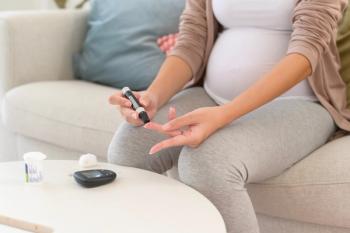
Monitor Your Blood Sugar to Stay Healthy
Approximately 20 million people—7% of the population of the United States—have the disease called diabetes, and it is the sixth leading cause of death.
In diabetes, the body does not make enough of the hormone insulin, or it uses the insulin incorrectly. The part of the body that makes the insulin is called the pancreas. Insulin is needed by your body to change what you eat—all the proteins, carbohydrates, and fat—into energy. Insulin delivers energy-rich glucose, or sugar, to cells throughout the body.
What Are the 2 Types of Diabetes?
•In type 1 diabetes, the pancreas can not make insulin. Therefore people with type 1 diabetes have to inject insulin regularly.
•In type 2 diabetes, the pancreas can make some insulin, but the body can not use it correctly. These patients usually take oral drugs at first, but eventually they will need to inject insulin.
If untreated, both type 1 and type 2 diabetes can cause problems in the heart, eyes, kidneys, and nerves. These problems can lead to serious problems, such as heart attack and stroke. To stay healthy, controlling your blood sugar is very important.
Why Should I Monitor My Blood Glucose?
Monitoring blood glucose means checking your blood sugar with what is called a glucose meter. This tells you whether your blood sugar is within normal levels. The 2 main goals for monitoring blood glucose are important to your health:
•The first goal is to prevent low levels of blood glucose. This is called hypoglycemia. This can cause you to pass out, or lose consciousness. People with hypoglycemia also may experience tremors, sweating, and hunger.
•The second goal is to prevent high levels of blood glucose. This is called hyperglycemia. People with hyperglycemia can feel very thirsty and hungry, or have to go to the bathroom a lot.
Monitoring blood sugar levels is even more important for those people who have to inject insulin. In patients with type 1 diabetes, the American Diabetes Association (ADA) suggests monitoring blood glucose levels 3 or more times every day. This monitoring usually is done before meals and at bedtime.
Currently, the ADA does not have specific recommendations on how often patients with type 2 diabetes should test their blood glucose. These patients are encouraged to talk with their health care provider to decide when it would be best to monitor blood glucose. Pregnant women who are diagnosed with diabetes (also known as gestational diabetes) should test their blood glucose twice daily.
How Do I Monitor My Blood Glucose?
You will need 3 things to monitor your blood glucose: a glucose meter, test strips, and lancets. It is very important that your test strips and lancets work with your glucose meter, or the test might not be accurate.
The steps for monitoring you blood glucose should be the same each time:
•Wash your hands with warm water. Dry them well. •Make sure that the glucose meter is clean. Wipe away any debris with a dry to slightly moist cloth.
•Some glucose meters require that you adjust, or calibrate, them before use to make sure that the meter can use the test strip.
•Turn on the meter and wait for the "Ready" sign.
•Using a lancet, prick the side of your finger. Remember that it is best to use a different finger each time to allow the cut to heal.
•Working from the base of the finger, gently squeeze toward the finger-prick. Place a small drop of blood onto the test strip.
•Place the test strip into the glucose meter so that it can automatically read the blood glucose level.
•Within a minute, a number will appear on the glucose meter. This is the level of glucose in your blood. Some glucose meters automatically record and store your glucose readings. If yours does not, write down the number in your diabetes record notebook.
•Be sure to dispose of the lancet and the test strip properly. Containers for sharp needles and blood are colored red. Keep these containers away from pets and children.
Daily glucose monitoring may be uncomfortable at first, but it is a very important part of controlling your diabetes. Some of the newer glucose meters allow blood samples to be taken from other sites, such as your forearm, instead of your finger.
What Do the Blood Glucose Readings Mean?
Bring your glucose meter and your diabetes record notebook to every visit with your health care provider. He or she will determine how to best manage your diabetes using your glucose recordings. This might mean adjusting your medicine according to your daily blood glucose levels.
According to the ADA, if you monitor your blood glucose before meals the levels should be in the range of 90 to 130 milligrams per deciliter (mg/dL). If you monitor after meals, this range should be less than 180 mg/dL
The ADA also recommends that you get a blood test called the glycosylated hemoglobin assay (also known as the A1C) from your health care provider every 3 to 4 months. The ADA recommends an A1C of level of less than 7%
Conclusion
Although diabetes can be a life-threatening disease, proper monitoring of blood glucose may decrease health problems and prolong life.
Mr. Pham is a student at the University of California, San Francisco School of Pharmacy. Dr. Pham is an assistant professor of pharmacy practice at Arnold & Marie Schwartz College of Pharmacy and Health Sciences, Long Island University, Brooklyn, NY.
Newsletter
Stay informed on drug updates, treatment guidelines, and pharmacy practice trends—subscribe to Pharmacy Times for weekly clinical insights.









































































































































































































